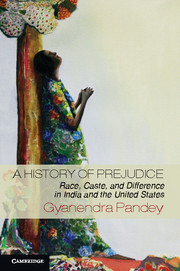3 - Dalit Conversion
The Assertion of Sameness
Published online by Cambridge University Press: 05 February 2013
Summary
The term “Dalit conversion” refers at first glance, and in its most common usage, to the mass conversion of Dalits to Buddhism in 1956 and afterward, which I mentioned in Chapter 2, as well as to Islam, Christianity, and other religions at various other times both before and after 1956. I use it, however, to describe a number of different dimensions of the Dalit struggle for self-definition and the redefinition of society, for the conversion represents a remarkable attempt to escape from centuries of stigmatization and oppression. The struggle occurred on many fronts in the mid- and late twentieth century, extending far beyond the realm of religious practice and the attendant social prejudices.
I use Dalit conversion, for one thing, to refer to the Dalit entrance into formal citizenship. That step is marked by the abolition of Untouchability in the Indian constitution of 1950, the institution of universal adult franchise, the extension of key legal and political rights to all sections of the Indian population, and the introduction of statutory safeguards and support for specially disadvantaged groups (in the form of “reservations” or reserved quotas in education and a number of public services), with all the consequences this has had for Indian society and politics. I use it also to register a more diffuse, but perhaps no less significant, aspect of the Dalit objective, which may be described loosely as a conversion to the modern, a condition signified by a discourse of individual rights, self-making, science, urbanity, and a democratic public sphere. These are clearly ongoing processes. Indeed, as I have already suggested, one might argue that the most noteworthy feature of the Dalit conversion is that it is a conversion for the future to a large extent in the future and involving ideally the conversion of all humanity, Dalit and non-Dalit, with the non-Dalit also being recast in that future in a new Dalit mold.
- Type
- Chapter
- Information
- A History of PrejudiceRace, Caste, and Difference in India and the United States, pp. 61 - 96Publisher: Cambridge University PressPrint publication year: 2013

